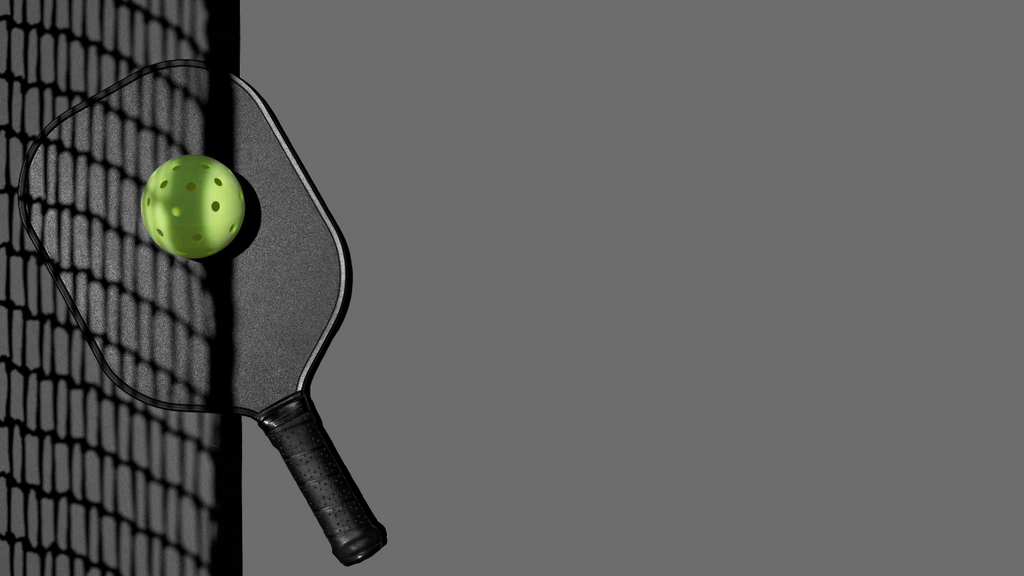Pickleball Paddles: Finding the Perfect Fit for Your Game

Pickleball, the beloved sport combining elements of tennis, badminton, and table tennis, has surged in popularity in recent years. As enthusiasts flock to courts around the world, the quest for the perfect equipment becomes paramount. Among the essentials, the pickleball paddle stands out as a crucial instrument in defining one's playing experience. In this article, we delve into the intricacies of pickleball paddles, guiding you through the process of finding the ideal match for your game.
Understanding Pickleball Paddles
To navigate the diverse landscape of pickleball paddles, it's essential to grasp their anatomy and the various materials used in their construction.
Grip: The handle of the paddle, crucial for maintaining control and stability during gameplay.
Face: The surface area of the paddle that comes into contact with the ball, influencing power and spin.
Core: The internal structure of the paddle, which can be made of materials like polymer, aluminum, or Nomex.
Edge guard: The rim surrounding the face of the paddle, providing protection against damage and wear.
Graphite paddles: Known for their lightweight yet sturdy construction, offering excellent maneuverability and power.
Composite paddles: Featuring a blend of materials such as fiberglass and carbon fiber, providing a balance of power and control.
Wood paddles: Traditional in style, favored by some for their unique feel and affordability.
Selecting the right paddle involves considering several key factors tailored to your individual preferences and playing style.
Weight: Optimal paddle weight varies depending on personal preference and playstyle, with lighter paddles offering greater maneuverability and heavier paddles providing more power.
Grip size: The circumference of the paddle grip affects comfort and control, with options ranging from small to large to accommodate different hand sizes.
Surface texture: Paddle faces come in various textures, influencing ball control and spin generation. Smooth surfaces offer more power, while textured surfaces enhance spin.
Noise level: Some paddles produce more noise upon impact with the ball, which may be a consideration for players in noise-sensitive environments.
Price range: Paddle prices vary widely, with options available for every budget. It's essential to find a balance between quality and affordability.
Understanding your playing style is crucial in selecting a paddle that complements your strengths and preferences on the court.
Power players: Those who rely on aggressive shots and high-speed drives benefit from paddles with larger surface areas and a balance of power and control.
Control players: Players who prioritize precision and placement over power may prefer paddles with smaller surface areas and enhanced maneuverability.
Balanced players: For those who seek a middle ground between power and control, versatile paddles with a balanced design are ideal.
Before committing to a purchase, it's advisable to test out different paddles to find the one that feels most comfortable and suits your playing style.
Demo days and events: Many sports retailers and pickleball clubs host demo days where players can try out a variety of paddles free of charge.
Borrowing from friends or clubs: Borrowing paddles from friends or local clubs allows you to experience different models in actual gameplay scenarios.
Renting paddles from sports stores: Some sports stores offer paddle rental services, allowing you to test paddles during practice sessions before making a decision.
Proper maintenance ensures the longevity and performance of your pickleball paddle, prolonging its lifespan and preserving its playing characteristics.
Cleaning after use: Wipe down the paddle with a damp cloth after each game to remove dirt, sweat, and other debris that can accumulate on the surface.
Storing properly: Store the paddle in a dry, cool place away from direct sunlight and extreme temperatures to prevent warping or damage to the materials.
Avoiding extreme temperatures: Exposure to extreme heat or cold can cause the paddle's materials to degrade over time, affecting its performance and durability.
As your skills and playing style evolve, you may find it necessary to upgrade your paddle to better suit your needs and preferences.
Signs it's time for an upgrade: Visible signs of wear and tear, decreased performance, or changes in your playing style may indicate that it's time for a new paddle.
Factors to consider when upgrading: Consider factors such as weight, grip size, and paddle material when selecting a new paddle to ensure it aligns with your evolving playing style.
Trading in old paddles: Some retailers offer trade-in programs where you can exchange your old paddle for credit towards the purchase of a new one, making upgrading more affordable.
Adding personal touches to your paddle not only enhances its aesthetic appeal but also fosters a sense of ownership and connection to your equipment.
Custom grips: Customize your paddle grip with colors, patterns, or materials that reflect your personality and style preferences.
Decorative designs: Personalize the face of your paddle with decals, stickers, or custom artwork to make it uniquely yours.
Name engraving: Add a personal touch by engraving your name or initials onto the paddle, ensuring it stands out on the court and is easily identifiable.
Conclusion
In the dynamic world of pickleball, finding the perfect paddle is a journey of exploration and adaptation. By understanding the nuances of paddle construction, considering your playing style and preferences, and taking the time to test out different options, you can find a paddle that enhances your performance and enjoyment on the court. Whether you're a power player seeking dominance or a precision player aiming for finesse, the right paddle is essential for unlocking your full potential in the game of pickleball.
